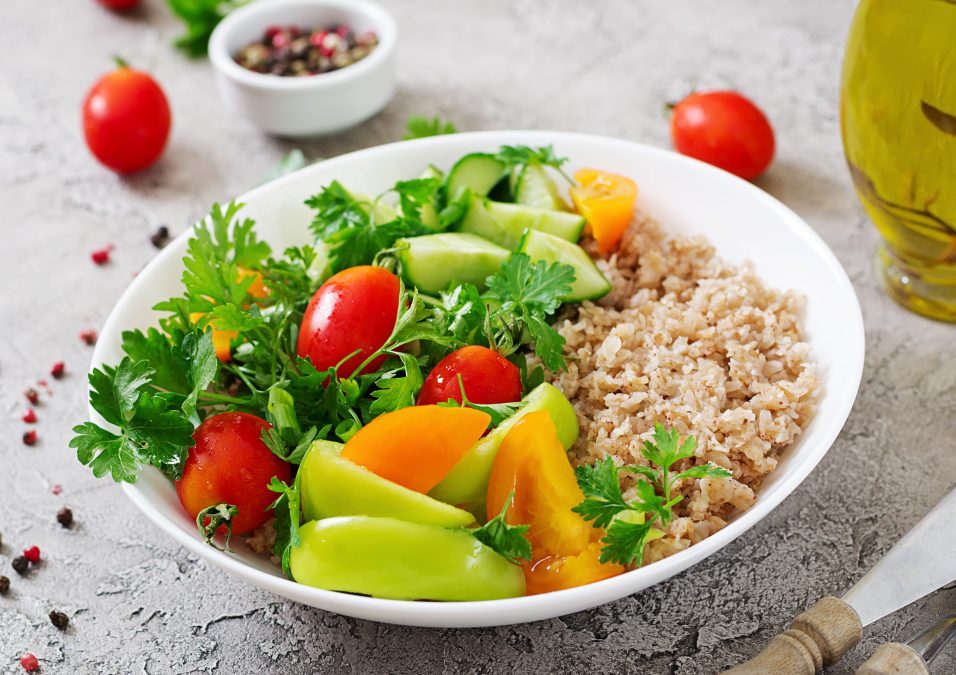
From Bunk Beds to “Bruhs” – The Observer March 2024
March 5, 2024
The Easter Bunny Reads Yet More Letters – Under the Scope March 2024
March 5, 2024March is National Nutrition Month! To increase awareness of the importance of proper nutrition, the US Food & Drug Administration (FDA) provides tools and guidelines to help you make healthy food choices. These guidelines focus on two primary recommendations for staying healthy—read labels and use the MyPlate guide to plan meals.
Read labels.
Start your health journey by reading nutrition labels on packaged foods and drinks. These facts guide food choices that are higher in dietary fiber, vitamin D, calcium, iron, and potassium and lower in saturated fats, sodium and added sugars.
The FDA requires that labels specifically list vitamin D, potassium, calcium and iron, as Americans often consume less than recommended of those nutrients. Diets higher in vitamin D and calcium can reduce the risk of osteoporosis. Potassium helps lower blood pressure, and iron reduces risk of anemia.
Plan with MyPlate.
Nutritional facts labels combined with the MyPlate Plan help you monitor calories and nutrients in food and drink choices. MyPlate recommends daily portions of the five basic food groups—vegetables, fruits, grains, protein and dairy.
Fruit and vegetable choices
Half of the color-coded MyPlate consists of fruits and vegetables, which can be fresh, frozen, canned in water, dried or 100% fruit and vegetable juices. Most of the recommended intake should come from whole fruits and vegetables rather than juice.
Among the health benefits of fruits are:
- Lower risks for hypertension, cholesterol level, heart disease and certain cancers;
- Boosted immunity;
- Tissue growth and repair;
- Helps heal cuts and wounds;
- Healthy teeth and gums.
Whole and refined grains
Grains take up more than one-fourth of daily food choices. There are two kinds of grains—whole and refined. At least half of the grains you eat should be whole grains such as whole-wheat flour, cracked wheat, oatmeal, quinoa and brown rice.
Health benefits of whole grains include:
- Helps lower cholesterol level and risk of heart disease;
- Supports healthy digestion and bowel function;
- Boosts metabolism and healthy nervous system;
- Helps prevent iron-deficiency anemia;
- Helps weight management.
Protein food group
Less than one-fourth of your meal should consist of protein—fish, seafood, meat, poultry, eggs, nuts, seeds and soy products. Bean, peas and lentils cross over as both proteins and vegetables.
Healthy protein options benefit your body by:
- Building bones, muscles, cartilage, skin and tissue;
- Forming red blood cells;
- Producing iron to prevent anemia;
- Supporting immune system;
- Reducing risks for heart disease.
Dairy options
About 90% of Americans do not consume enough dairy products such as milk, cheese and yogurt. As you know, milk builds strong bones and teeth. Calcium and vitamin D in dairy are vital nutrients for all ages but especially important in children for building bone mass and for older people to prevent osteoporosis. The most benefits come from fat-free or low-fat dairy. Plant-based “milks” contain some calcium but lack the nutritional content of dairy milk. People who can’t tolerate dairy can get calcium from calcium-fortified juices, rice, soy and almond milks.
Before making major changes to your health and wellness regimen, talk first with your healthcare provider. Thibodaux Regional Wellness Education Center also offers nutrition services to help you plan lifestyle changes. For more information on health and wellness services, contact Thibodaux Regional Wellness Education Center, 985.493.4765.








